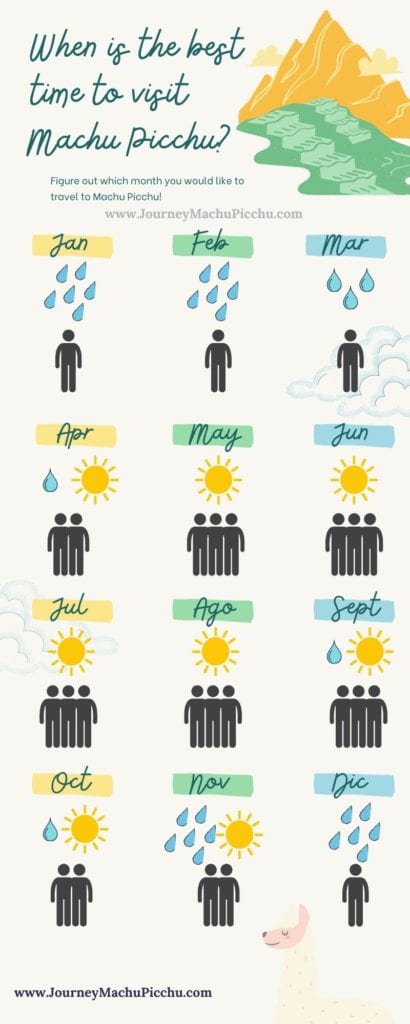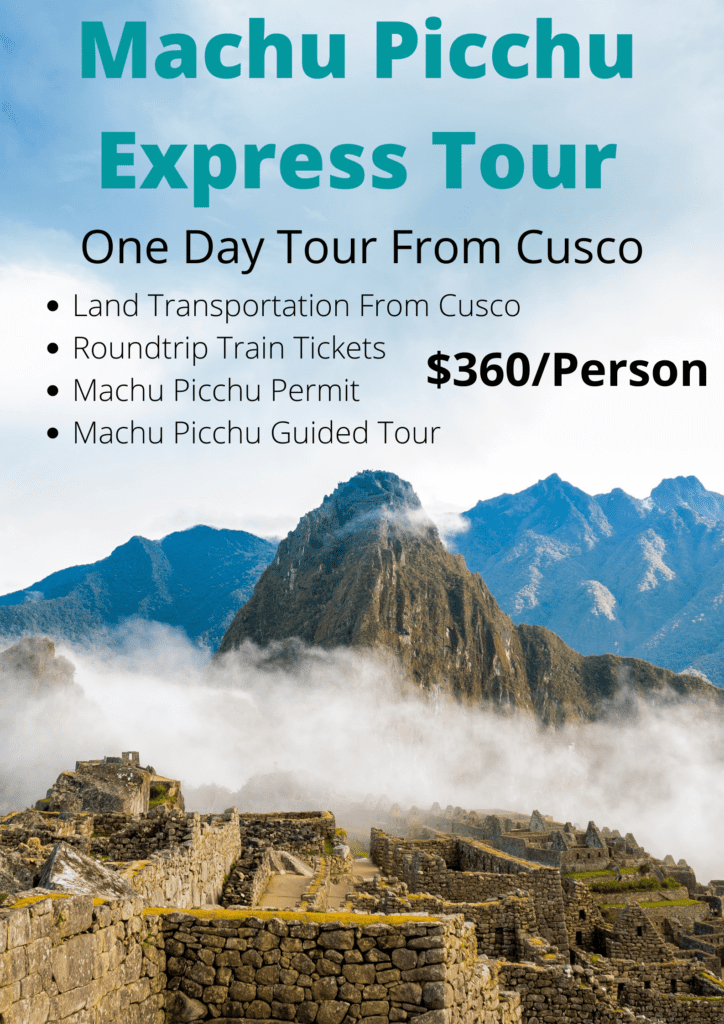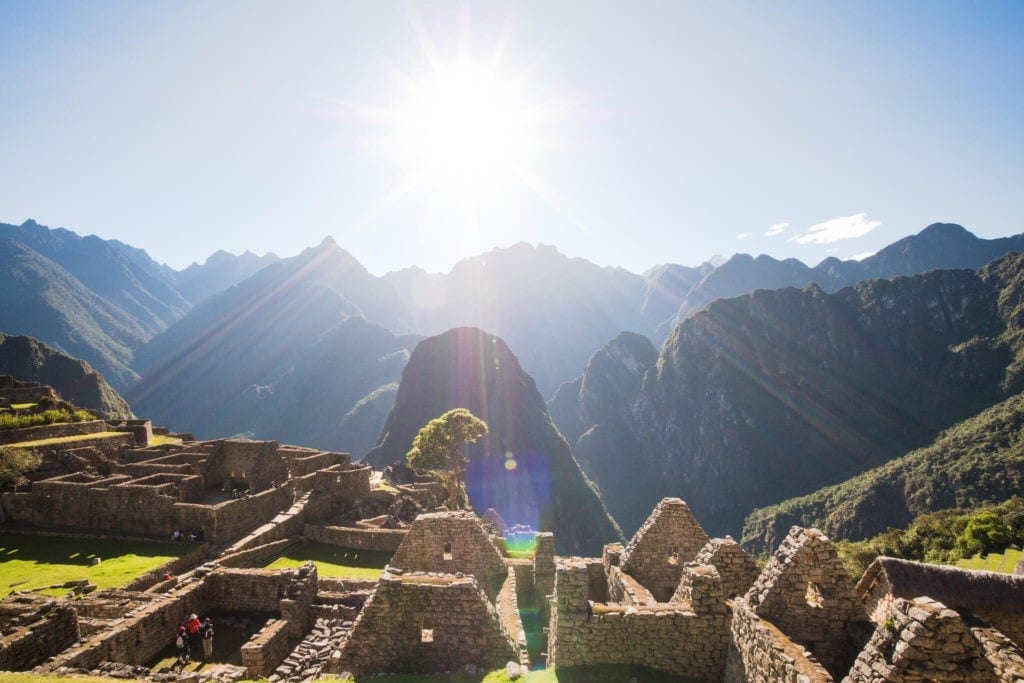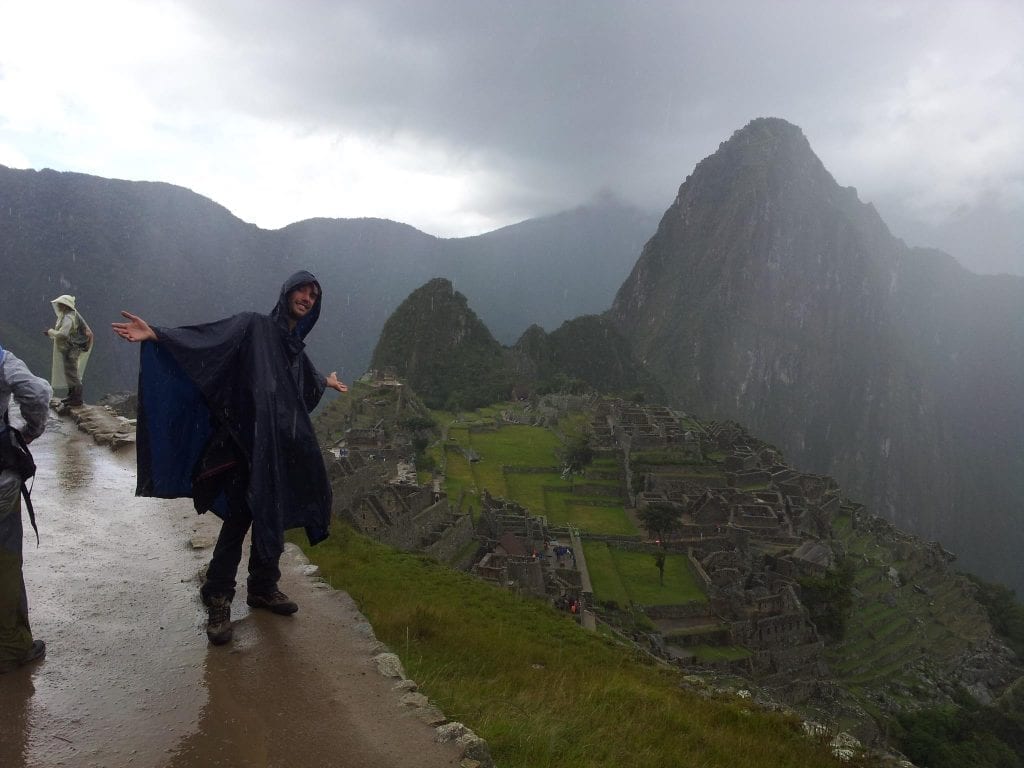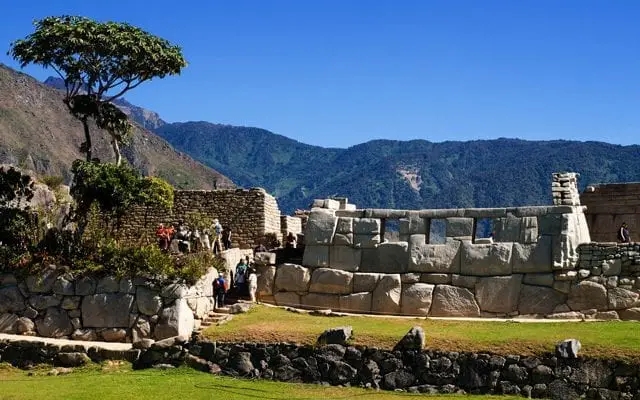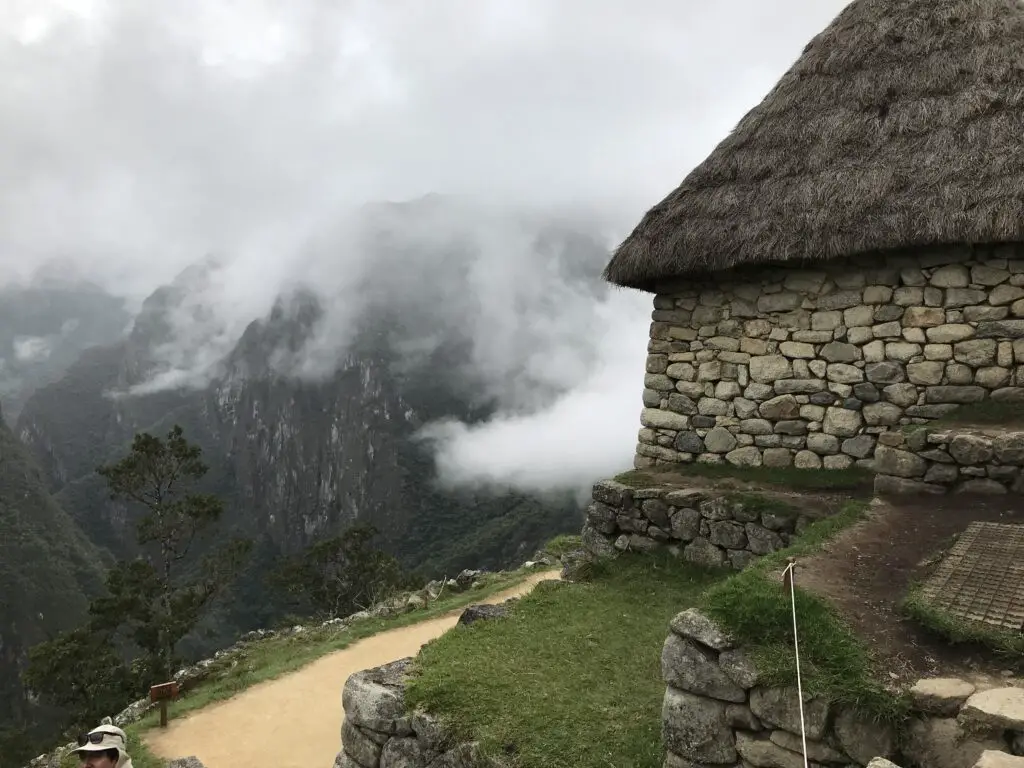When is The Best Time to Visit Machu Picchu?
James Bustamante is Native to New York but born to Peruvian parents. He has been traveling throughout Latin America since early 2003 and finally made his home in Peru. James has made his way by eating and traveling through almost every country in Central and South America.
Last Updated on March 20, 2023 by James Bustamante
A complete learning guide to when is the best time to visit Machu Picchu. The guide includes the best dates, temperatures, crowd sizes, etc.
Between May and September is the best time to visit Machu Picchu during the dry season. The dry season is generally the shortest answer, but other factors might make you want to take your Machu Picchu hike at a completely different time of the year.
Machu Picchu is a year-round destination because each travel season has pros and cons. So let’s begin by going over both seasons in the highlands of Peru.
When is The Best Time Of The Day To Visit Machu Picchu?
The best time of the day to visit Machu Picchu depends on the month. Generally, it’s best to enter Machu Picchu early in the morning, preferably during the first entry time, from 6:00 am to 9:00 am. During this time, the number of tourists entering the site is usually lower, and you can experience the site with fewer crowds and cooler temperatures.
Another option is to enter Machu Picchu during the last entry time, from 2:00 pm to 5:00 pm. Many tourists have already left the site during this time so that you can explore Machu Picchu with fewer crowds.
It’s important to note that during peak season (June to August), Machu Picchu can be crowded all day, regardless of the entry time. Therefore, if you want to avoid crowds, visiting during the shoulder season (April to May and September to November) is best.
The early schedule is also when you have the best chance to get that morning photograph of the sun rising over the Andes. Getting this sought-after photograph can be difficult even during the dry season in the highlands because there might be an early morning cloud cover. However, it is the only time of the day to attempt to get that perfect shot. So, if you are heading to the “Old Mountain” to get that picturesque view, the morning is your best bet.
The best time or schedule to visit Machu Picchu and avoid large crowds is undoubtedly after the 5:00 pm shift. The afternoon shifts to visit Machu Picchu are usually much less crowded, and you will run into fewer travelers going to the Inca citadel from Aguas Calientes and almost no trekkers from the Inca trail.
By late afternoon, most people have left Machu Picchu and boarded the train back to Ollantaytambo or Cusco. Therefore, the afternoon shift will be your best option when visiting Machu Picchu, regardless of the season, if you intend to avoid large crowds.
The Machu Picchu Dry Season
The dry season takes place from May to September of each year. The highland dry season is when you are most likely to have clear skies with little to no rain, but this is also when the high tourist season begins.
The lowest levels of rain will occur between June and July, making it a perfect time to travel if you want to join the Inti Raymi celebrations towards the end of June.
The guarantee of clear and sunny weather makes this time of the year the most attractive for most travelers. This season also coincides with summer family trips to those coming from the USA and anyone else on summer vacation.
It is also worth noting that while there will be sunny days, it is already winter at this time of the year. So the evenings will have chilly temperatures along the Peruvian Andes and the cloud forest. The cold morning temperatures are usually a surprise to trekkers on hikes like the Inca Trail Machu Picchu.
The biggest downside to the great weather that takes effect over the dry season is the number of travelers coming to enjoy the clear Andean skies along with you. You can expect large crowds during the dry season, so carefully select the best time to enter Machu Picchu for your group.
What to Pack for The Dry Season?
Here is a comprehensive list of items you should pack for the dry season in Machu Picchu. Since we are at a high elevation near the equatorial center of the world, the sun’s UV rays can be powerful, even when it does not feel hot.
- Hats or Caps for the sun
- Sunblock
- Chapstick or lip balm
- Sunglasses
- Light jacket – daytime
- T-shirts and light shirts – daytime
- Heavier Jacket/sweater – Evenings
The Machu Picchu Rainy Season
As most will expect, the rainy season in Machu Picchu will coincide with the low tourist season. This rainy season in the highlands will range from December to March, with some years either ending early or extending by a few weeks.
The heaviest rainfall is usually between January and February, with the second month of the year generally being wetter. This highland season will also feature warmer weather in the Southern Hemisphere. We are experiencing summer, after all. Look for warmer nights in this part of the world around this time.
Most people don’t really consider the rainy season as an option to visit Machu Picchu. The truth is that the rainy season doesn’t mean that it rains all day like in other parts of the world. The majority of the rainy season comes with scattered showers. The rains are usually common in the mornings and mid-afternoon hours.
It can rain for 20 minutes to around a couple of hours. We even get sunshine during this wet season in Peru, usually after the early morning rain. The rainy season will mostly reference the grey clouds we are subject to for a few months and not anything related to hefty rainfall. Higher rainfall happens occasionally, but it is most probable between mid-January and late February.
In terms of crowds, the rainy season will have much smaller groups and fewer people waiting to enter Machu Picchu. If you are looking for a clear shot of a sunny day in Machu Picchu, you might have to wait until mid-morning, but fewer people will be in the background cluttering up your photography.
There is, of course, a lot to be said about a photograph of Machu Picchu with clouds hovering over the surrounding mountains and landscape.It is also worth noting that during Christmas and New Year’s dates, there is always an uptick in travelers coming to Cusco and Machu Picchu for celebrations.
What to Pack for The Rainy Season?
The rainy season in Machu Picchu has its recommendations for a packing list, although some items are similar to the ones recommended for the dry season.
- Rain poncho or jacket
- Hat or cap
- Sunblock
- Lip balm or chapstick
- Sunglasses
- Insect Repellent (RECOMMENDED)
- Waterproof footwear (Something comfortable)
The Machu Picchu Shoulder Seasons
There is also the possibility of traveling to Machu Picchu during the shoulder seasons. We count April, October, and November as part of what we refer to as the shoulder seasons. These “shoulder seasons” basically bear a higher possibility of rain than the dry season but nothing more than a few showers here and there. So these seasons are basically what you would refer to as “just a little rain” when there is any chance of precipitation.
Another important point in favor of visiting Machu Picchu during the shoulder seasons is that fewer people will likely attend the Inca citadel.
If you wish to travel in April, you will find a lush cloud forest because the rainy season has just culminated, making the surrounding landscapes very green. However, October and November will have a dryer-looking landscape (as dry as a rainforest can look) and slightly higher precipitation possibilities in the evenings.
The shoulder months represent a good “in-between” time between the yearly rains and the dry period. These months will usually have less crowded Machu Picchu ruins, so they are definitely “dates” worth exploring.
What to Pack for The Shoulder Seasons?
Packing for the shoulder seasons of Machu Picchu will have you bringing similar items along that you would during the wet season.
- A Rain poncho or jacket
- Bring a hat or cap
- Sunblock
- Lip balm or chapstick
- Sunglasses
- Insect Repellent
- Waterproof footwear (Something comfortable)
What’s The Best Time of The Year to Hike Machu Picchu?
What if you think about hiking one of the peaks available at Machu Picchu, like the Huayna Picchu peak or the Machu Picchu mountain? In this case, we suggest making your Machu Picchu hiking plans for the dry season or the shoulder seasons to make sure the weather conditions are most favorable.
The additional hikes in Machu Picchu, like the Huayna Picchu are rather steep. During the rainy season, it can get slippery and unpredictable. Therefore, choosing the dry season for these types of hikes is preferable.
If you plan on taking one of the multi-day hikes to Machu Picchu, like the classic Inca trail or the Salkantay trek, then the dry season will give you the most favorable weather because the routes will be dry and nobody likes to hike in wet clothes. On the other hand, the evenings and nights will be frigid during the dry season, which is also something to consider. At the highest elevation during the Salkantay or Inca trail, the temperature can be around the freezing point in the evenings.
If the dry season is not a possibility, then the shoulder seasons will be pretty good times to hike around the Andes as long as you pack correctly and have the proper gear. You won’t be subject to heavy rains or freezing nights during the shoulder seasons either.
Any season you choose to hike to the citadel, remember that to make it comfortable and successful for you, you will need to make your pack the right way.
Sunblock, sunglasses, rain ponchos, light and heavy jackets wearing layers, and everything else mentioned in this post are all crucial parts of a positive trekking experience. Remember that we will be traversing the cloud forest, alpine tundra, and several microclimates before ever reaching Machu Picchu.
Travelers Tip: Remember that the classic Inca trail is closed off for maintenance during February, so it will not be available for booking.
7-Day Journey Includes:
- Accommodations 6 nights in total
- Lima city tour
- Airport Transportation
- Sacred Valley Tour
- Train to Aguas Calientes
- Machu Picchu Permits
- Machu Picchu Guided Tour
- Bilingual Guides
- Return Train ticket to Cusco
Weather in Machu Picchu by Month
By each month of the calendar year, the weather in Machu Picchu is listed below with average temperatures and rainfall amounts.
Machu Picchu in January
January represents one of the wettest months of the rainy season in Machu Picchu. There are approximately 8.9 inches (22.6 cm) of rainfall on average, meaning that it rains 18 days out of the 31 in January, so there is a good chance you won’t see any rain. The walking routes in Machu Picchu, in general, will be damp and can make the paths a bit slippery for incoming trekkers.
January is also one of the warmer months in Machu Picchu, with average temperatures of high 68 degrees Fahrenheit (20 Celsius) and lows (usually at night) of 46 (7.7 Celsius) degrees Fahrenheit.
Machu Picchu in February
February is also part of the peak rainy season in Machu Picchu; the average rainfall is 8.2 inches (20.8 cm) for the entirety of the month. It won’t rain every day, but the terrain will be damn and similar to January, somewhat slippery even on non-precipitation days. You can look forward to only a handful of tourists at any given time in February as well.
Machu Picchu in March
Once we get to March, we reach the rainy season’s end. However, it will still be relatively wet, with an average rainfall of 8 inches (20.2 cm). Therefore, if you would like to start a hike in March, it is best to wait until the end of the month, when you are more likely to get a few dry days.
Machu Picchu in April
By the time we reach April in the year, you can look forward to the dryer and sunny days, nearly half the amount of rainfall at 4.5 inches (11.43 cm) as in March, and lush green landscapes.
Daily temperatures will be around 70 degrees Fahrenheit (21 Celsius), making it a comfortable setting for hikers, there are also lows of 43 degrees Fahrenheit (6 Celsius) in the evenings.
You will still need to bring what’s on your rainy season packing list in case there are some showers, but for the most part, the weather is changing into the dry season.
Machu Picchu in May
May can be considered the official beginning of the dry season in Machu Picchu. Nevertheless, it is one of the best times to Visit Machu Picchu because there are around 1.4 inches of rainfall (3.6 cm), but the surrounding landscapes are very green and lush, making them perfect for photography!
With the change in weather comes the start of the high tourist season, so if you are looking toward traveling to Machu Picchu in May, it is best to book the trip several months in advance. Remember that there are many groups of people waiting for the start of the dry season so they can take hikes like the Inca Trail or the Salkantay trek.
Machu Picchu in June
June tends to be the most popular month to visit Machu Picchu out of the whole year. There is little to no rainfall making it the driest month, but temperatures can be chilly at night. Think low to mid-thirties with an average of 35 degrees (1.11 Celsius). The Machu Picchu ruins will be crowded during the daytime, thanks to the fantastic, sunny weather in the highlands.
June is also when we celebrate the Inti Raymi festival, so travelers have a general uptick starting in the last ten days of the month. In addition, the sun festival is frequented by travelers from all over the globe, so make sure to book ahead of time if you are interested in a June hike to Machu Picchu.
Machu Picchu in July
July only has around three days of rain in total, and most of that would be early morning showers that last about 10 -15 minutes. It is the second driest month making it an ideal time to hike into Machu Picchu. July is usually the coldest month of the year when it comes to Machu Picchu weather.
The average temperature will be around 68 degrees Fahrenheit (20 degrees Celsius) in the daytime and 34 degrees Fahrenheit (1.1 Celsius) at night. So make sure to pack some winter clothing if you plan on taking something like the Salkantay trek or the classic 4 day Inca trail.
Machu Picchu in August
There are many people who end up visiting Machu Picchu in August, and it is probably one of the busiest months in the citadel due to summer breaks and vacations taking place in the northern hemisphere. As a result, there is very little chance of rain, and temperatures are similar to what you would expect in June and July.
Machu Picchu in September
Machu Picchu is still subject to suitable weather, but there is a higher chance of rainfall than in the previous three months. In September, the average total rainfall is 2.2 inches (5.58 cm), so it isn’t much even if it does rain. The Inca citadel is still quite busy, so look for medium to large crowds in the morning.
Machu Picchu in October
For most of the month, October is a great time to visit Machu Picchu, and it is even a good month for a multi-day hike. There is a slightly higher chance of rain with a monthly average of 3.7 inches (9.39 cm). It is also a comfortable 72 degrees Fahrenheit (22.2 Celsius) in the daytime, so t-shirts and maybe a poncho will be necessary.
Crowds will be much smaller than in the previous months, so this is an excellent time if you want to avoid too many people. The scenery is still very green (it is a cloud forest, after all) but noticeably less lush than earlier in the year. October is an excellent month for those mysterious “Machu Picchu with clouds in the background” photography.
Machu Picchu in November
By the time November rolls in, you begin to see the signs of the incoming rainy season in Machu Picchu. As a result, November will see a relatively low number of tourists except for towards the end of the month when Thanksgiving break occurs.
The temperatures are around the same as in October. If you want to hike to Machu Picchu like the Inca trail, November is the cutoff month to do so. We recommend that if you are taking a hike, it be early in the month.
Machu Picchu in December
In the year’s final month, we can say the rainy season has officially started. For the most part, we will see a cloudy sky and an average of 7 inches (17.78 cm) of rainfall throughout the month. As you might expect, the month of December will have small crowds in Machu Picchu. However, there is a sudden uptick in travelers towards the end of the month.
The sudden increase is due to the Christmas and New Year’s Eve celebrations that take place in the Peruvian highlands. Therefore, we don’t recommend taking any of the multi-day hikes at this point in the year.
Conclusion
So when is the best time to visit Machu Picchu? The answer ultimately will come down to your particular preferences. If you are looking for the driest and sunniest time to get those perfect Machu Picchu shots, opt for the dry season. On the other hand, if you want smaller crowds and don’t mind a little bit of rain, the shoulder rainy seasons are an excellent time to travel to Machu Picchu.
Your Machu Picchu trip can also vary on whether you plan on visiting other parts of Peru. For example. Lima has excellent weather from late December to April, and you might want to spend more time on the coast than in the highlands.
These different temperatures might mean that earlier in the year might work best for you to combine both destinations. There are also particular months to consider if you want to visit the Amazon, fly over the Nazca Lines, or visit Peru’s northern beaches.
The point is that it is always a perfect time to travel to Peru, there are advantages to every time of the year, and in some cases, some months are better than others. However, if you make sure to plan the trip, it will be an unforgettable experience regardless of when you decide to take that trip.
If you need more information on Peru tour packages or would like to go ahead and make your Machu Picchu reservations, make sure to contact us with the form below!
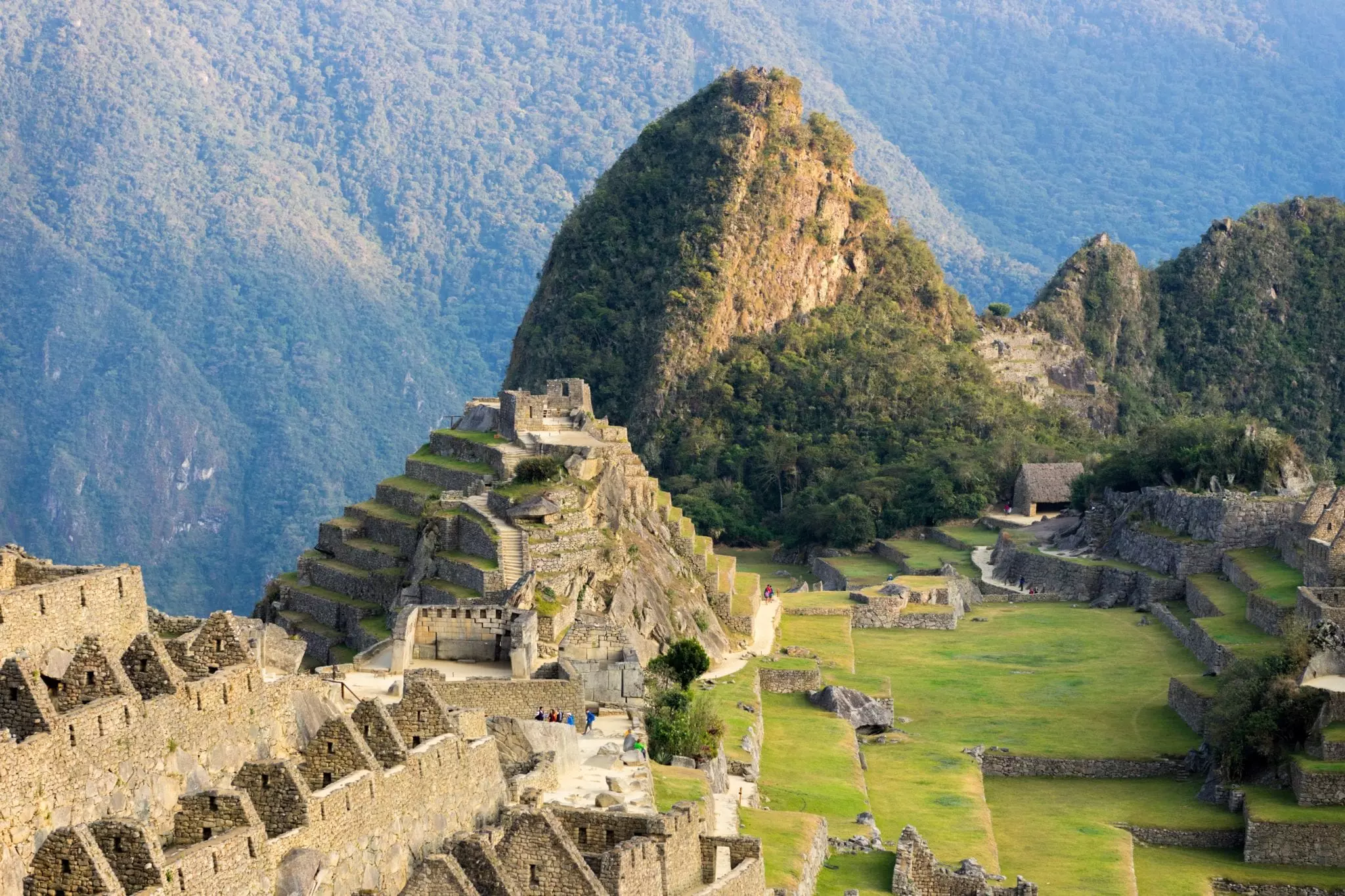
Contact us today!
Frequently Asked Questions
When is the start of the rainy season in Machu Picchu?
The start of the rainy season in Machu Picchu and most of the Peruvian highlands is December.
When is the end of the rainy season in Machu Picchu?
The end of the rainy season is usually in late March or early April. The dry, sunnier season begins in May. Therefore, April is generally considered a shoulder month.
Can I take an umbrella to Machu Picchu?
No, umbrellas are not allowed inside the Machu Picchu complex.
What is the best month to hike to Machu Picchu?
June is the best month to hike to Machu Picchu if you look for clear skies with little to no rain.


